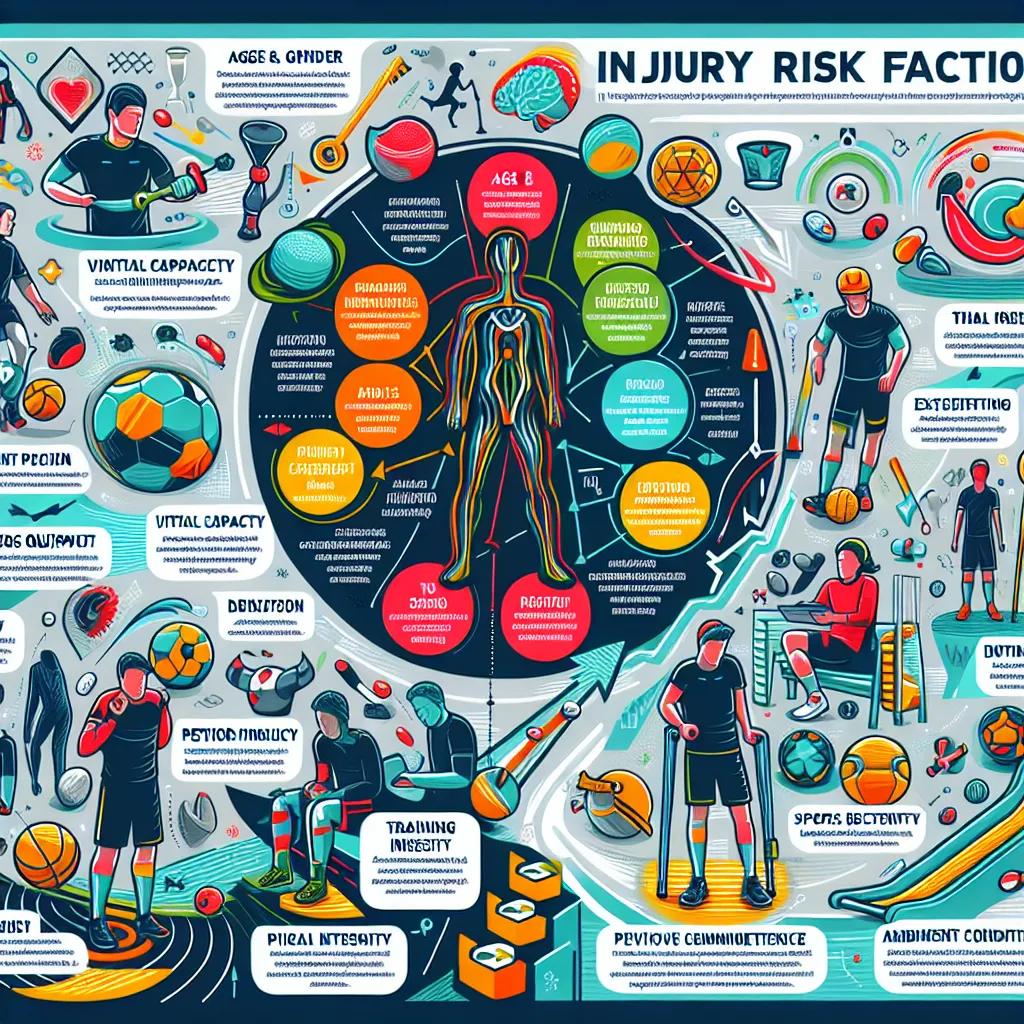Injury risk factors are a crucial topic in sports science and healthcare. Understanding this terminology is essential for IELTS test-takers, especially those aiming for high scores in the Reading and Writing modules. Let’s dive into the vocabulary, usage, and strategies to effectively learn and apply these terms in your IELTS preparation.
Definition and Pronunciation
Injury risk factors /ˈɪn.dʒər.i rɪsk ˈfæk.tərz/ (noun phrase): Elements or conditions that increase the likelihood of an injury occurring in sports or other physical activities.

Context and Usage
Examples in Context
-
Athletes who ignore proper warm-up routines are exposing themselves to significant injury risk factors.
Analysis: This sentence highlights the importance of warm-up routines in mitigating injury risks, emphasizing that neglecting this aspect can increase the likelihood of injuries. -
Coaches must be aware of the injury risk factors specific to each sport to design effective training programs.
Analysis: This example underscores the need for sport-specific knowledge of injury risk factors, suggesting that different sports may have unique risk profiles. -
Overtraining is one of the most common injury risk factors among competitive athletes.
Analysis: Here, we see a specific injury risk factor identified, illustrating how excessive training can lead to increased injury probability. -
Researchers are constantly studying new injury risk factors to improve athlete safety and performance.
Analysis: This sentence demonstrates the ongoing nature of research in this field, indicating that our understanding of injury risk factors is continually evolving. -
Poor running technique can be a significant injury risk factor for long-distance runners.
Analysis: This example shows how technique-related issues can contribute to injury risks, specifically in the context of running.
Common Contexts
In IELTS, you might encounter “injury risk factors” in passages related to sports science, physiotherapy, occupational health, or general healthcare. It’s particularly relevant in Task 1 reports describing data on sports injuries or Task 2 essays discussing athlete health and safety.
Vocabulary Analysis
Word Structure
- Injury: Base word (noun)
- Risk: Modifying noun
- Factors: Plural noun indicating multiple elements
Synonyms and Antonyms
-
Synonyms:
- Injury predictors /ˈɪn.dʒər.i prɪˈdɪk.tərz/ (noun phrase): Elements that can forecast the likelihood of an injury.
- Hazard indicators /ˈhæz.ərd ˈɪn.dɪ.keɪ.tərz/ (noun phrase): Signs or conditions that point to potential dangers.
- Vulnerability markers /ˌvʌl.nər.əˈbɪl.ə.ti ˈmɑː.kərz/ (noun phrase): Characteristics that suggest susceptibility to injury.
-
Antonyms:
- Protective factors /prəˈtek.tɪv ˈfæk.tərz/ (noun phrase): Elements that reduce the risk of injury.
- Safety measures /ˈseɪf.ti ˈmeʒ.ərz/ (noun phrase): Actions or conditions that promote injury prevention.
Memory Techniques
Mind Mapping
Create a mind map with “Injury Risk Factors” at the center, branching out to different categories such as:
- Intrinsic factors (age, gender, physical condition)
- Extrinsic factors (equipment, environment, rules of the sport)
- Sport-specific factors (e.g., contact vs. non-contact sports)
Storytelling
Imagine a fictional athlete named Alex preparing for a marathon. Visualize Alex navigating through various injury risk factors like improper shoes (extrinsic), overtraining (intrinsic), and challenging weather conditions (environmental). This narrative can help you remember different types of risk factors.
Practice Exercises
-
Write a paragraph describing the most common injury risk factors in a sport of your choice. Use at least three related terms from this lesson.
-
Create a table comparing injury risk factors in two different sports, explaining why each factor is more or less relevant to each sport.
-
Develop a short survey that an athletic trainer might use to assess injury risk factors in new team members. Include at least five questions using vocabulary from this lesson.
For more practice on sports-related vocabulary, you might find our article on motivation in sports helpful. Understanding motivational factors can complement your knowledge of injury risks and athlete performance.
Conclusion
Mastering the vocabulary around “injury risk factors” is crucial for IELTS success, especially in topics related to sports and health. By understanding these terms and their applications, you’ll be better equipped to handle reading passages and craft sophisticated responses in writing tasks. Remember to practice using these terms in context regularly, and don’t hesitate to explore related concepts to broaden your vocabulary further.
We encourage you to share your own experiences with learning this vocabulary in the comments section below. How have you applied these terms in your IELTS preparation? Do you have any questions about using “injury risk factors” in specific IELTS tasks? Your insights and queries can help fellow learners and contribute to a richer learning experience for everyone.